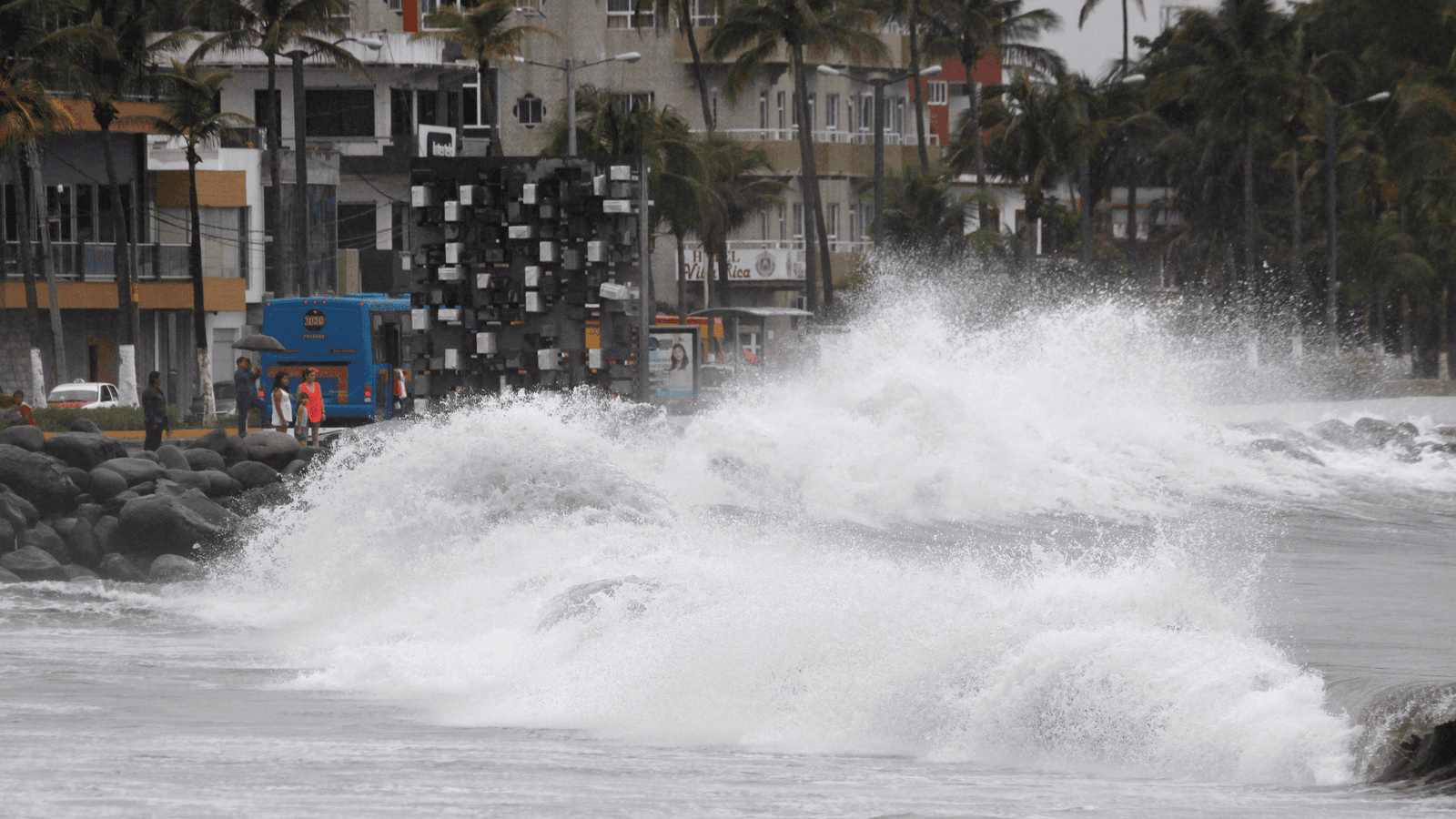Is climate change making hurricanes worse?
Waves break over the sea wall ahead of Hurricane Franklin in Veracruz, Mexico, Aug. 9, 2017.
During natural disasters like Hurricane Harvey, a single question has become a common refrain: What role did climate change play?
While scientists can’t pinpoint if climate change “causes” any specific weather event, they can talk about which climate-related factors worsen their impact or contribute to their severity.
When it comes to hurricanes, rising sea levels and ocean temperatures both play a role.
Sea levels as measured in Galveston, Texas, have risen roughly half a foot relative to the coast since 2000. That means the storm surges that come with hurricanes like Harvey are also half a foot higher, which translates to more flooding.
Higher ocean temperatures due to global warming can also increase the severity of heavy rains, something scientists often describe as climate change “juicing” the system.
Atmospheric scientist Michael E. Mann outlined the relationship between ocean temperatures and Harvey in The Guardian today:
“Sea surface temperatures in the area where Harvey intensified were … 1 to 1.5C warmer than 'average' temperatures a few decades ago. That means 3 to 5 percent more moisture in the atmosphere.
That large amount of moisture creates the potential for much greater rainfalls and greater flooding. The combination of coastal flooding and heavy rainfall is responsible for the devastating flooding that Houston is experiencing.”
Hurricanes more complex than events like droughts and heat waves
In the past decade, scientists have begun to be able to more specifically pinpoint to what extent climate change influences individual weather events like heat waves, droughts and heavy rains.
Last year, the National Academies of Sciences, Engineering and Medicine released a report on the emerging field of “climate attribution.” It found that scientists, often using long-term historical data sets and climate models, can reliably link climate change to the intensity and frequency of specific individual weather events, rather than simply talking about the climate change factors that lead, in general, to certain weather trends.
For example, last year scientists with the World Weather Attribution network found that torrential August rains that caused historic flooding in Louisiana are “now expected to occur at least 40 percent more often than it was in our pre-industrial past.”
Related: Living with Rising Seas, an in-depth series
The National Academies report found this type of attribution works best for trends connected to global temperature, where the impact of climate change is well understood.
The relationship between individual storms like Harvey and climate change is more complex.
Part of the reason why is that historical records are much less reliable for hurricanes than they are for temperature.
“The way we see hurricanes today — where we have a vast array of satellites, we have aircraft reconnaissance missions, we have a number of different sensors — is very different from the way we saw hurricanes a hundred years ago,” Princeton geoscientist Gabriel Vecchi, who was involved with the Louisiana rainfall study, told The World.
“A hundred years ago, if a hurricane is going to be seen at sea, it would have to come across the path of some unfortunate ship, and that ship would have to record its existence.”
Climate scientists expect global warming to fuel more intense hurricanes and tropical cyclones over the coming century, so not having apples-to-apples data to compare historical conditions to current ones “creates a little bit of a frustration for me, and a little bit of a puzzle for the community,” Vecchi said, “as to how to deal with the fact that our past records don’t allow us to test that prediction.”
Still, some climate scientists are doing so-called climate attribution studies on hurricanes using more recent historical data.
Following 2013’s devastating Typhoon Haiyan, MIT atmospheric scientist Kerry Emanuel used a wind forecasting model and plugged in the thermodynamic conditions of both 30 years ago and present day.
“And when we do that,” Emanuel told The World in 2013, “we find that the wind speeds are about 10 percent larger now.”
Emanuel said the destruction wrought by windstorms goes up quickly with wind speed, “so that really corresponds to something like 30 to 40 percent more damage than the same exact event might've done had it occurred in the thermal environment of the 1980s.”
More recently, Emanuel has shown that hurricanes that intensify just before landfall, giving local residents less time to prepare, should increase due to global warming.
“A storm that intensifies 60 [knots] in the 24 hours just before landfall, occurring on average once per century in the climate of the late 20th century, may occur every five to 10 years by the end of this century,” Emanuel wrote earlier this year in the Bulletin of the American Meteorological Society.
So while researchers can’t say that climate change “caused” an incredibly complex atmospheric event like Harvey, they can pinpoint climate-related factors that worsen hurricanes. And show us ways that storms like Harvey foreshadow what we can expect to see more of in a warming world.
